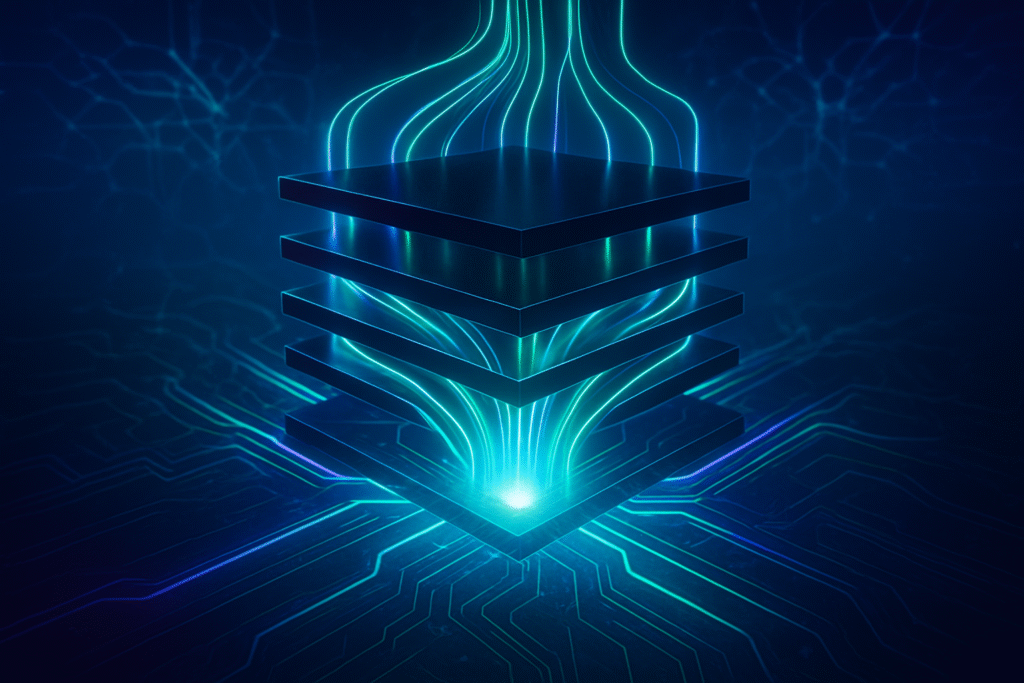
High-Bandwidth Memory (HBM) has rapidly ascended to become an indispensable component in the relentless pursuit of faster and more powerful Artificial Intelligence (AI) and High-Performance Computing (HPC) systems. Addressing the long-standing "memory wall" bottleneck, where traditional memory struggles to keep pace with advanced processors, HBM's innovative 3D-stacked architecture provides unparalleled data bandwidth, lower latency, and superior power efficiency. This technological leap is not merely an incremental improvement; it is a foundational enabler, directly responsible for the accelerated training and inference capabilities of today's most complex AI models, including the burgeoning field of large language models (LLMs).
The immediate significance of HBM is evident in its widespread adoption across leading AI accelerators and data centers, powering everything from sophisticated scientific simulations to real-time AI applications in diverse industries. Its ability to deliver a "superhighway for data" ensures that GPUs and AI processors can operate at their full potential, efficiently processing the massive datasets that define modern AI workloads. As the demand for AI continues its exponential growth, HBM stands at the epicenter of an "AI supercycle," driving innovation and investment across the semiconductor industry and cementing its role as a critical pillar in the ongoing AI revolution.
The Technical Backbone: HBM Generations Fueling AI's Evolution
The evolution of High-Bandwidth Memory (HBM) has seen several critical generations, each pushing the boundaries of performance and efficiency, fundamentally reshaping the architecture of GPUs and AI accelerators. The journey began with HBM (first generation), standardized in 2013 and first deployed in 2015 by Advanced Micro Devices (NASDAQ: AMD) in its Fiji GPUs. This pioneering effort introduced the 3D-stacked DRAM concept with a 1024-bit wide interface, delivering up to 128 GB/s per stack and offering significant power efficiency gains over traditional GDDR5. Its immediate successor, HBM2, adopted by JEDEC in 2016, doubled the bandwidth to 256 GB/s per stack and increased capacity up to 8 GB per stack, becoming a staple in early AI accelerators like NVIDIA (NASDAQ: NVDA)'s Tesla P100. HBM2E, an enhanced iteration announced in late 2018, further boosted bandwidth to over 400 GB/s per stack and offered capacities up to 24 GB per stack, extending the life of the HBM2 ecosystem.
The true generational leap arrived with HBM3, officially announced by JEDEC on January 27, 2022. This standard dramatically increased bandwidth to 819 GB/s per stack and supported capacities up to 64 GB per stack by utilizing 16-high stacks and doubling the number of memory channels. HBM3 also reduced core voltage, enhancing power efficiency and introducing advanced Reliability, Availability, and Serviceability (RAS) features, including on-die ECC. This generation quickly became the memory of choice for leading-edge AI hardware, exemplified by NVIDIA's H100 GPU. Following swiftly, HBM3E (Extended/Enhanced) emerged, pushing bandwidth beyond 1.2 TB/s per stack and offering capacities up to 48 GB per stack. Companies like Micron Technology (NASDAQ: MU) and SK Hynix (KRX: 000660) have demonstrated HBM3E achieving unprecedented speeds, with NVIDIA's GH200 and H200 accelerators being among the first to leverage its extreme performance for their next-generation AI platforms.
These advancements represent a paradigm shift from previous memory approaches like GDDR. Unlike GDDR, which uses discrete chips on a PCB with narrower buses, HBM's 3D-stacked architecture and 2.5D integration with the processor via an interposer drastically shorten data paths and enable a much wider memory bus (1024-bit or 2048-bit). This architectural difference directly addresses the "memory wall" by providing unparalleled bandwidth, ensuring that highly parallel processors in GPUs and AI accelerators are constantly fed with data, preventing costly stalls. While HBM's complex manufacturing and integration make it generally more expensive, its superior power efficiency per bit, compact form factor, and significantly lower latency are indispensable for the demanding, data-intensive workloads of modern AI training and inference, making it the de facto standard for high-end AI and HPC systems.
HBM's Strategic Impact: Reshaping the AI Industry Landscape
The rapid advancements in High-Bandwidth Memory (HBM) are profoundly reshaping the competitive landscape for AI companies, tech giants, and even nimble startups. The unparalleled speed, efficiency, and lower power consumption of HBM have made it an indispensable component for training and inferencing the most complex AI models, particularly the increasingly massive large language models (LLMs). This dynamic is creating a new hierarchy of beneficiaries, with HBM manufacturers, AI accelerator designers, and hyperscale cloud providers standing to gain the most significant strategic advantages.
HBM manufacturers, namely SK Hynix (KRX: 000660), Samsung Electronics (KRX: 005930), and Micron Technology (NASDAQ: MU), have transitioned from commodity suppliers to critical partners in the AI hardware supply chain. SK Hynix, in particular, has emerged as a leader in HBM3 and HBM3E, becoming a key supplier to industry giants like NVIDIA and OpenAI. These memory titans are now pivotal in dictating product development, pricing, and overall market dynamics, with their HBM capacity reportedly sold out for years in advance. For AI accelerator designers such as NVIDIA (NASDAQ: NVDA), Advanced Micro Devices (NASDAQ: AMD), and Intel (NASDAQ: INTC), HBM is the bedrock of their high-performance AI chips. The capabilities of their GPUs and accelerators—like NVIDIA's H100, H200, and upcoming Blackwell GPUs, or AMD's Instinct MI350 series—are directly tied to their ability to integrate cutting-edge HBM, enabling them to process vast datasets at unprecedented speeds.
Hyperscale cloud providers, including Alphabet (NASDAQ: GOOGL) (with its Tensor Processing Units – TPUs), Amazon Web Services (NASDAQ: AMZN) (with Trainium and Inferentia), and Microsoft (NASDAQ: MSFT) (with Maia 100), are also massive consumers and innovators in the HBM space. These tech giants are strategically investing in developing their own custom silicon, tightly integrating HBM to optimize performance, control costs, and reduce reliance on external suppliers. This vertical integration strategy not only provides a significant competitive edge in the AI-as-a-service market but also creates potential disruption to traditional GPU providers. For AI startups, while HBM offers avenues for innovation with novel architectures, securing access to cutting-edge HBM can be challenging due to high demand and pre-orders by larger players. Strategic partnerships with memory providers or cloud giants offering advanced memory infrastructure become critical for their financial viability and scalability.
The competitive implications extend to the entire AI ecosystem. The oligopoly of HBM manufacturers grants them significant leverage, making their technological leadership in new HBM generations (like HBM4 and HBM5) a crucial differentiator. This scarcity and complexity also create potential supply chain bottlenecks, compelling companies to make substantial investments and pre-payments to secure HBM supply. Furthermore, HBM's superior performance is fundamentally displacing older memory technologies in high-performance AI applications, pushing traditional memory into less demanding roles and driving a structural shift where memory is now a critical differentiator rather than a mere commodity.
HBM's Broader Canvas: Enabling AI's Grandest Ambitions and Unveiling New Challenges
The advancements in HBM are not merely technical improvements; they represent a pivotal moment in the broader AI landscape, enabling capabilities that were previously unattainable and driving the current "AI supercycle." HBM's unmatched bandwidth, increased capacity, and improved energy efficiency have directly contributed to the explosion of Large Language Models (LLMs) and other complex AI architectures with billions, and even trillions, of parameters. By overcoming the long-standing "memory wall" bottleneck—the performance gap between processors and traditional memory—HBM ensures that AI accelerators can be continuously fed with massive datasets, dramatically accelerating training times and reducing inference latency for real-time applications like autonomous driving, advanced computer vision, and sophisticated conversational AI.
However, this transformative technology comes with significant concerns. The most pressing is the cost of HBM, which is substantially higher than traditional memory technologies, often accounting for 50-60% of the manufacturing cost of a high-end AI GPU. This elevated cost stems from its intricate manufacturing process, involving 3D stacking, Through-Silicon Vias (TSVs), and advanced packaging. Compounding the cost issue is a severe supply chain crunch. Driven by the insatiable demand from generative AI, the HBM market is experiencing a significant undersupply, leading to price hikes and projected scarcity well into 2030. The market's reliance on a few major manufacturers—SK Hynix, Samsung, and Micron—further exacerbates these vulnerabilities, making HBM a strategic bottleneck for the entire AI industry.
Beyond cost and supply, the environmental impact of HBM-powered AI infrastructure is a growing concern. While HBM is energy-efficient per bit, the sheer scale of AI workloads running on these high-performance systems means substantial absolute power consumption in data centers. The dense 3D-stacked designs necessitate sophisticated cooling solutions and complex power delivery networks, all contributing to increased energy usage and carbon footprint. The rapid expansion of AI is driving an unprecedented demand for chips, servers, and cooling, leading to a surge in electricity consumption by data centers globally and raising questions about the sustainability of AI's exponential growth.
Despite these challenges, HBM's role in AI's evolution is comparable to other foundational milestones. Just as the advent of GPUs provided the parallel processing power for deep learning, HBM delivers the high-speed memory crucial to feed these powerful accelerators. Without HBM, the full potential of advanced AI accelerators like NVIDIA's A100 and H100 GPUs could not be realized, severely limiting the scale and sophistication of modern AI. HBM has transitioned from a niche component to an indispensable enabler, experiencing explosive growth and compelling major manufacturers to prioritize its production, solidifying its position as a critical accelerant for the development of more powerful and sophisticated AI systems across diverse applications.
The Future of HBM: Exponential Growth and Persistent Challenges
The trajectory of HBM technology points towards an aggressive roadmap of innovation, with near-term developments centered on HBM4 and long-term visions extending to HBM5 and beyond. HBM4, anticipated for late 2025 or 2026, is poised to deliver a substantial leap with an expected 2.0 to 2.8 TB/s of memory bandwidth per stack and capacities ranging from 36-64 GB, further enhancing power efficiency by 40% over HBM3. A critical development for HBM4 will be the introduction of client-specific 'base die' layers, allowing for unprecedented customization to meet the precise demands of diverse AI workloads, a market expected to grow into billions by 2030. Looking further ahead, HBM5 (around 2029) is projected to reach 4 TB/s per stack, scale to 80 GB capacity, and incorporate Near-Memory Computing (NMC) blocks to reduce data movement and enhance energy efficiency. Subsequent generations, HBM6, HBM7, and HBM8, are envisioned to push bandwidth into the tens of terabytes per second and stack capacities well over 100 GB, with embedded cooling becoming a necessity.
These future HBM generations will unlock an array of advanced AI applications. Beyond accelerating the training and inference of even larger and more sophisticated LLMs, HBM will be crucial for the proliferation of Edge AI and Machine Learning. Its high bandwidth and lower power consumption are game-changers for resource-constrained environments, enabling real-time video analytics, autonomous systems (robotics, drones, self-driving cars), immediate healthcare diagnostics, and optimized industrial IoT (IIoT) applications. The integration of HBM with technologies like Compute Express Link (CXL) is also on the horizon, allowing for memory pooling and expansion in data centers, complementing HBM's direct processor coupling to build more flexible and memory-centric AI architectures.
However, significant challenges persist. The cost of HBM remains a formidable barrier, with HBM4 expected to carry a price premium exceeding 30% over HBM3e due to complex manufacturing. Thermal management will become increasingly critical as stack heights increase, necessitating advanced cooling solutions like immersion cooling for HBM5 and beyond, and eventually embedded cooling for HBM7/HBM8. Improving yields for increasingly dense 3D stacks with more layers and intricate TSVs is another major hurdle, with hybrid bonding emerging as a promising solution to address these manufacturing complexities. Finally, the persistent supply shortages, driven by AI's "insatiable appetite" for HBM, are projected to continue, reinforcing HBM as a strategic bottleneck and driving a decade-long "supercycle" in the memory sector. Experts predict sustained market growth, continued rapid innovation, and the eventual mainstream adoption of hybrid bonding and in-memory computing to overcome these challenges and further unleash AI's potential.
Wrapping Up: HBM – The Unsung Hero of the AI Era
In conclusion, High-Bandwidth Memory (HBM) has unequivocally cemented its position as the critical enabler of the current AI revolution. By consistently pushing the boundaries of bandwidth, capacity, and power efficiency across generations—from HBM1 to the imminent HBM4 and beyond—HBM has effectively dismantled the "memory wall" that once constrained AI accelerators. This architectural innovation, characterized by 3D-stacked DRAM and 2.5D integration, ensures that the most powerful AI processors, like NVIDIA's H100 and upcoming Blackwell GPUs, are continuously fed with the massive data streams required for training and inferencing large language models and other complex AI architectures. HBM is no longer just a component; it is a strategic imperative, driving an "AI supercycle" that is reshaping the semiconductor industry and defining the capabilities of next-generation AI.
HBM's significance in AI history is profound, comparable to the advent of the GPU itself. It has allowed AI to scale to unprecedented levels, enabling models with trillions of parameters and accelerating the pace of discovery in deep learning. While its high cost, complex manufacturing, and resulting supply chain bottlenecks present formidable challenges, the industry's relentless pursuit of greater AI capabilities ensures continued investment and innovation in HBM. The long-term impact will be a more pervasive, sustainable, and powerful AI across all sectors, from hyper-scale data centers to intelligent edge devices, fundamentally altering how we interact with and develop artificial intelligence.
Looking ahead, the coming weeks and months will be crucial. Keep a close watch on the formal rollout and adoption of HBM4, with major manufacturers like Micron (NASDAQ: MU) and Samsung (KRX: 005930) intensely focused on its development and qualification. Monitor the evolving supply chain dynamics as demand continues to outstrip supply, and observe how companies navigate these shortages through increased production capacity and strategic partnerships. Further advancements in advanced packaging technologies, particularly hybrid bonding, and innovations in power efficiency will also be key indicators of HBM's trajectory. Ultimately, HBM will continue to be a pivotal technology, shaping the future of AI and dictating the pace of its progress.
This content is intended for informational purposes only and represents analysis of current AI developments.
TokenRing AI delivers enterprise-grade solutions for multi-agent AI workflow orchestration, AI-powered development tools, and seamless remote collaboration platforms.
For more information, visit https://www.tokenring.ai/.






